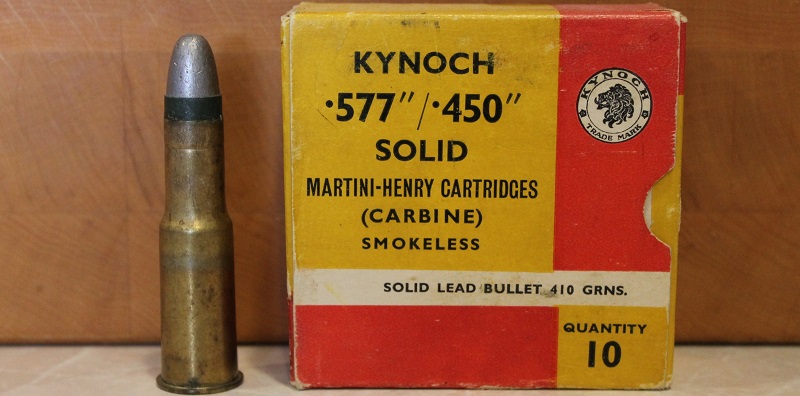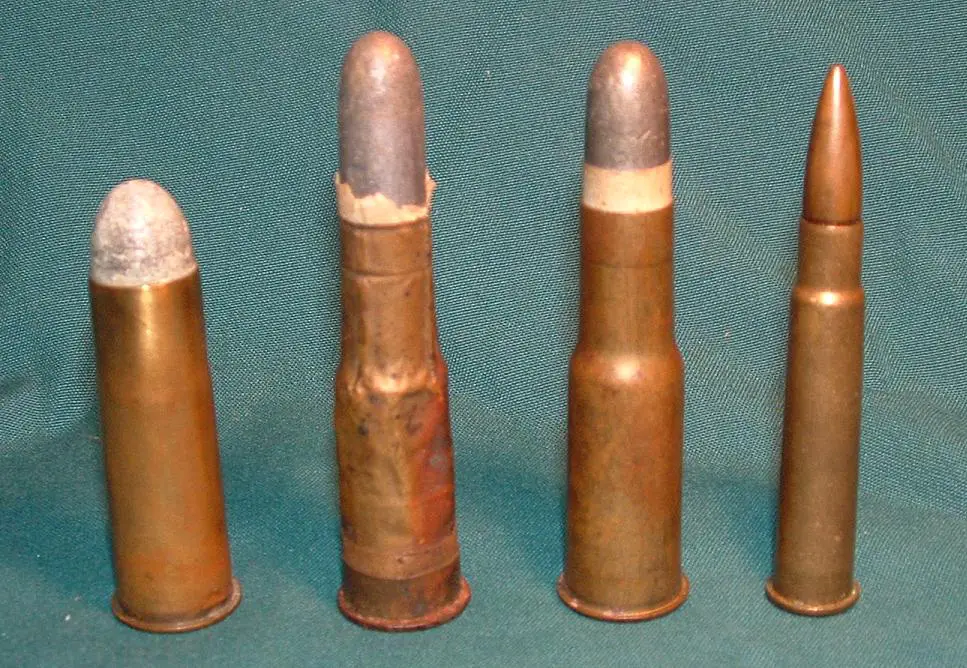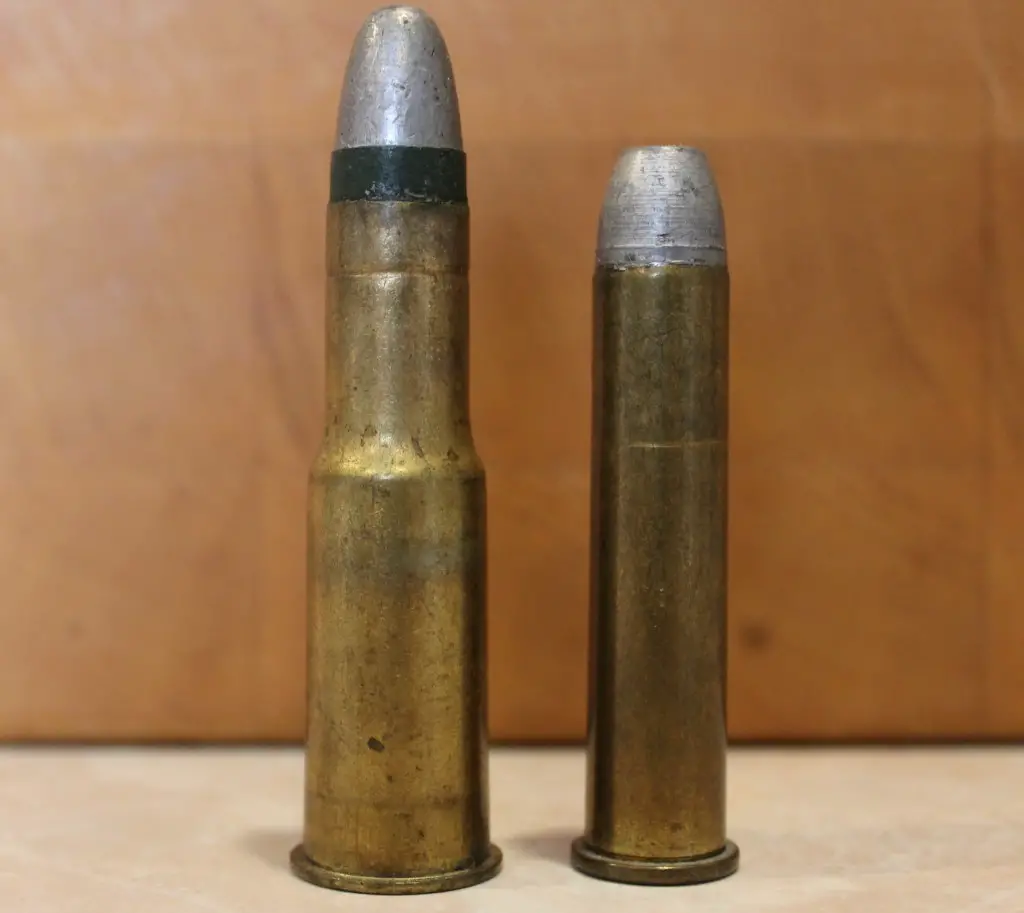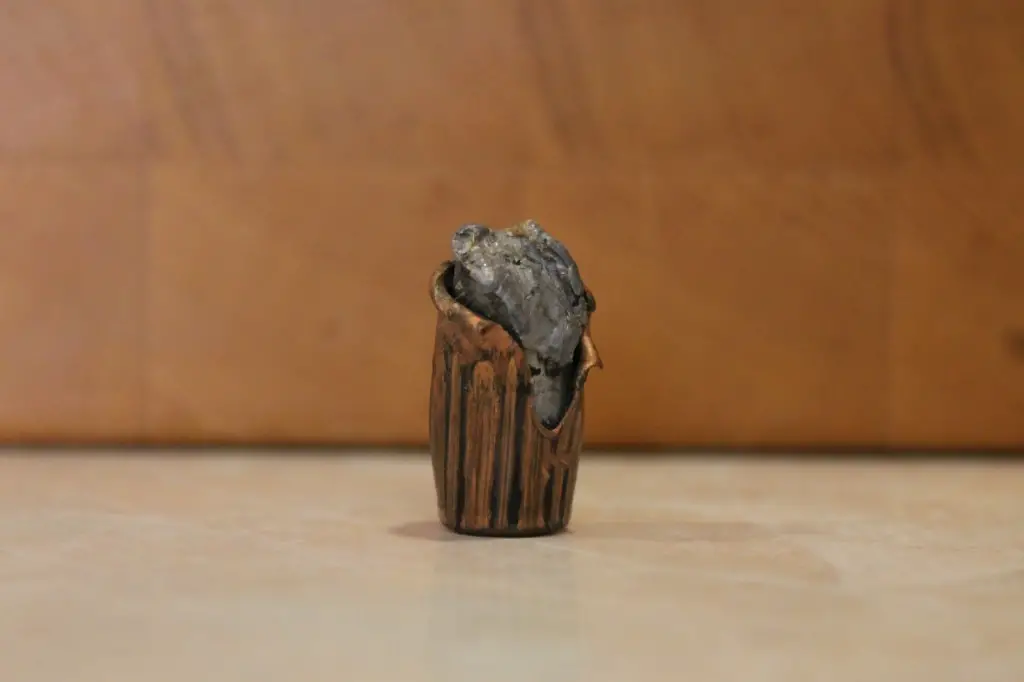Keep reading to learn about the history and recommended uses of the .577/450 Martini-Henry.
Adopted by the British Army in 1871, the .577/450 Martini-Henry was modification of the .577 Snider Cartridge that was reduced down to .45 caliber. Specifically designed to be used in the new Martini-Henry rifle, the .577/450 Martini-Henry cartridge was used by Soldiers and hunters in the British Empire for many decades. Though the cartridge is now obsolete and has since fallen out of use, the .577-450 can still be an effective hunting cartridge under certain circumstances.
History of the .577/450 Martini-Henry
When the British Army adopted the Martini-Henry rifle, it was the first rifle that they had ever adopted that was originally designed as a breechloader. The rifle, along with the accompanying .577/450 cartridge, was an instant success due to its rapid rate of fire and long (over 1,000 yards) effective range.
Two loads were originally produced for the cartridge: a rifle load and a carbine load. The rifle load fired a 480 grain lead bullet propelled by 85 grains of black powder to reach a velocity of approximately 1,350fps. The carbine load, designed for use by the cavalry and artillery in their Martini-Henry carbines, fired a 410 grain bullet pushed by 71 grains of black powder. The .577/450 cartridge was originally designed with a rolled brass case (left center).
However, these cartridges were difficult to extract from a hot, dirty chamber, as would be common under heavy combat conditions. To improve their reliability, the case was changed to the more modern drawn brass case (right center), which was much less prone to jamming.
The British Army used the .577/450 Martini-Henry all over their empire for the next few decades. The cartridge was accurate out to around 400 yards under normal conditions, or potentially as far as 1,000 yards when used by an expert rifleman. In addition to the impressive accuracy and range of the cartridge, the large, soft bullets fired by the .577/450 were also known for causing devastating wounds.
The rifle and cartridge became very famous during the Zulu War, specifically at the Battles of Isandlwana and Rorke’s Drift. In addition to use in Africa, the Martini-Henry was also utilized extensively by the British in Asia, especially in India and Afghanistan (where thousands of “Khyber Pass” copies were illicitly produced).
Though officially withdrawn from front line service with the British Army in 1889, the Martini-Henry was used by various reserve and police forces for many decades and thousands of the rifles can still be found in former British colonies all over the world.
.577/450 Martini-Henry Loads
Due to the age of the cartridge, factory .577/450 Martini-Henry ammunition can be very difficult to obtain. It is possible to find the occasional box of factory loaded ammunition at gun shows and on the internet. It is usually very expensive on the rare occasion when you do find it. Because of the difficulty obtaining factory ammunition, handloading the .577/450 is the way to go.
Though handloading the. 577-450 Martini-Henry is not for the faint of heart, it is certainly possible and the components and tools that you need are available. Finding brass is relatively easy: Jamison Brass & Ammunition produces and sells good quality Boxer primed .577/450 Martini-Henry cases. It is also not too difficult to find appropriately sized reloading dies.
Finding bullets is a little more difficult.
Even though the bullet is nominally .45 caliber, the cartridge was originally designed to use paper patched bullets, so the bore is actually slightly larger than .45 caliber. Because of this, very few Martini-Henry rifles will accurately fire the .458 diameter bullets designed for the .45-70 Government (below) and similar rifles because they are too small to engage the rifling without a paper patch.
Further complicating the situation is the fact that the actual bore diameter of a Martini-Henry rifle varies between models and even manufacturers. That being said, if you want to shoot loads without a paper patch, the bullet generally needs to be between .463 and .468 caliber (.466 diameter bullets are the perfect size for my Martini-Henry).
To be certain of the proper bullet size, you need to measure the bore of your exact rifle. Once you do that, there are manufacturers that will be happy to produce a custom bullet or bullet cast for you. Fortunately, there is a fair amount of reloading data using both smokeless and black powder for the .577-450 Martini-Henry available online. So, once you’ve gone through all of the hassle of finding all of the appropriate components, it’s not too hard to find loads that closely mimic the performance of the original loads that the British used in the 1800s.
Fortunately, if your rifle is in good shape (not a guarantee with old, black powder military surplus rifles), and you are using appropriately sized bullets, the .577-450 can be a very accurate cartridge.
Hunting With the .577/450 Martini-Henry
Even though finding .577/450 Martini-Henry ammunition can be a real hassle, it can be an extremely effective hunting cartridge. Since the cartridge enjoyed such widespread use in the British Army, it should not be surprising that it has also been used extensively used by hunters all over the British Empire as well.
Virtually every species of big game in the world from antelope to tiger to elephant has been successfully taken by hunters using the .577/450 Martini-Henry over the years. John “Pondoro” Taylor famously used the .577/450 Martini-Henry to hunt elephant and Cape Buffalo for a short period of time at the beginning of his career. While it certainly worked for him, I would not recommend using the .577/450 on thick skinned dangerous game. The cartridge is a much better choice on smaller game like deer, feral hogs, black bear, and most species of African plains game.
I’ve personally used the .577/450 Martini-Henry to take a kudu, warthog, and springbok. I was using a 400gr Hawk custom bullet fired at 1,520 feet per second, which was quite effective on all three animals. The bullet exited the warthog and springbok, but I recovered the bullet from the kudu. As you can see below, it did not expand very well, probably due to the velocity being too low.
However, all three animals were taken cleanly and only ran a short distance after the shot. Even though the .577/450 can be a capable performer at long range, it is better to only take shots at relatively close range (where bullet drop is minimal) when using it for hunting. At 50-150 yards, it can even be effective on large animals like elk, moose, and eland. Also, since it fires a heavy sized bullet at a slow to moderate velocity, the .577/450 does not produce large amounts of ruined, blood shot meat like high velocity cartridges do.
While the cartridge has fallen by the wayside in recent years, the .577/450 Martini-Henry can still be a great cartridge for hunting many species of big game. Finding ammunition can be a chore, but the cartridge is still a solid performer under the right conditions. Countless hunters all over the world have taken many different species of exotic game with the .577/450 Martini-Henry since it was first developed nearly 150 years ago. There is no reason why you can’t do the same thing with this unique and storied cartridge.
Enjoy this article on the .577/450 Martini Henry? Please share it with your friends on Facebook and Twitter.
Make sure you follow The Big Game Hunting Blog on Facebook, Instagram, Twitter, and YouTube.
NEXT: BEST HUNTING EAR PROTECTION OPTIONS FOR SPORTSMEN
NEXT: READ THIS BEFORE HUNTING CAPE BUFFALO WITH THE .45-70 GOVERNMENT
MartiniHenry.com and Svartkrutt.net were used as references for this article.
John McAdams is a proficient blogger, experienced shooter, and long time hunter who has pursued big game in 8 different countries on 3 separate continents. John graduated from the United States Military Academy at West Point and is a veteran of combat tours with the US Army in Iraq & Afghanistan. In addition to founding and writing for The Big Game Hunting Blog, John has written for outdoor publications like Bear Hunting Magazine, The Texas State Rifle Association newsletter, Texas Wildlife Magazine, & Wide Open Spaces. Learn more about John here, read some of John’s most popular articles, and be sure to subscribe to his show: the Big Game Hunting Podcast.






Excellent article. Someone obviously went to a lot of effort to come up with the equipment to make those hunting loads.
Interesting article. Enjoyed reading it
Where can I source the ammunition?